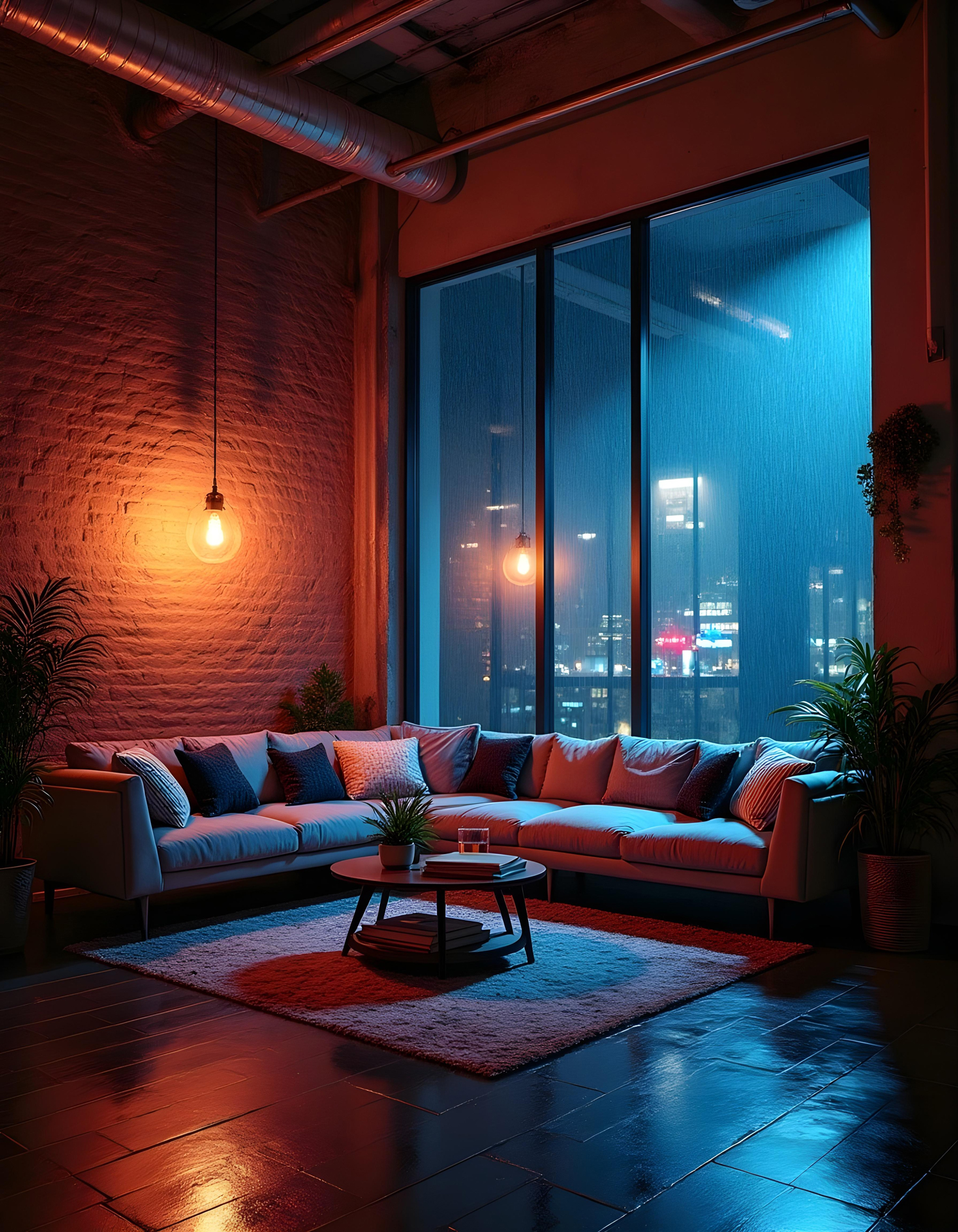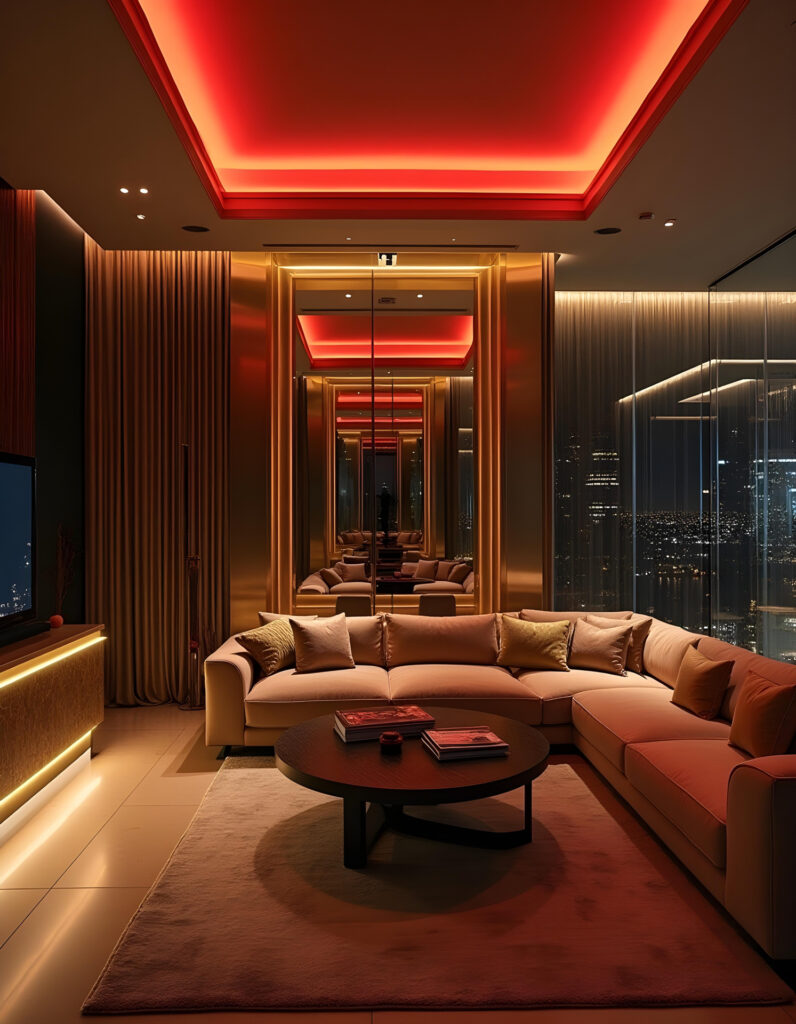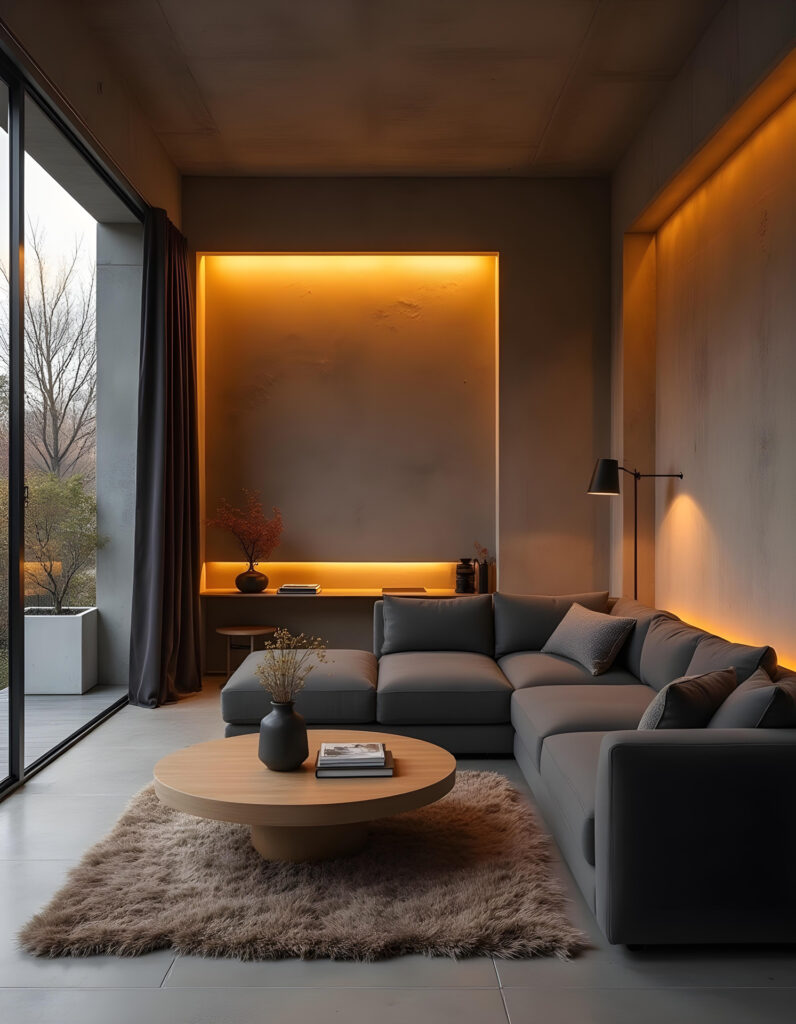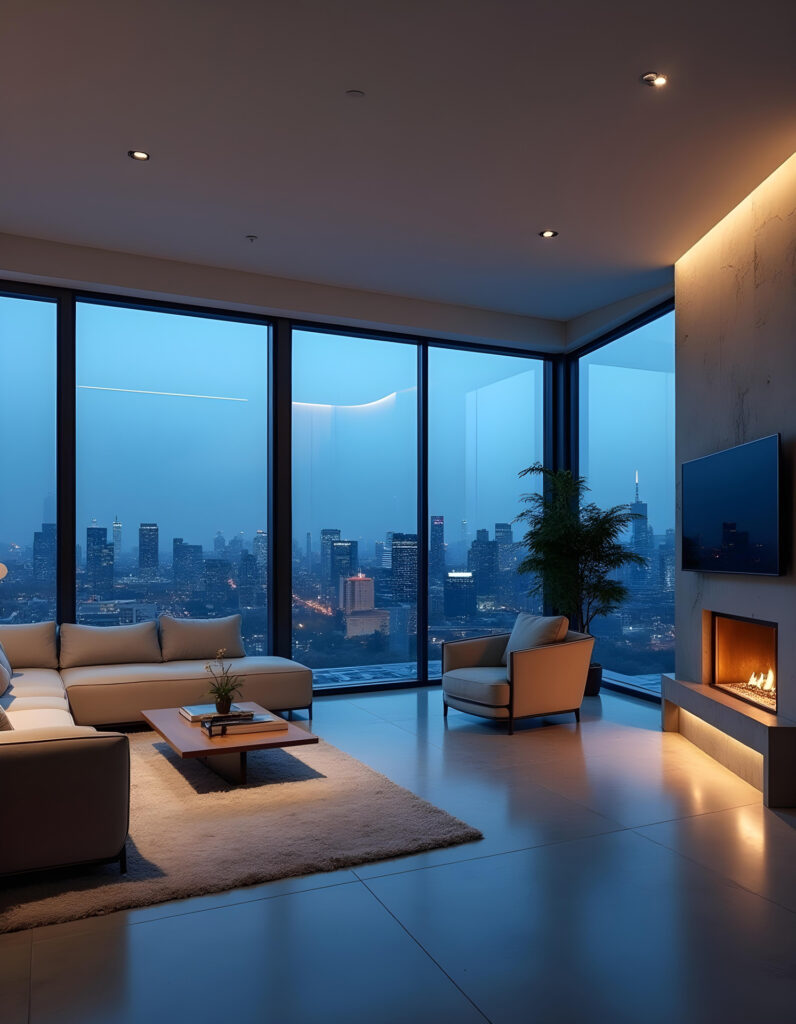Lighting Effects
- Home
- Lighting Effects




Lighting Effects
Downlighting
Downlighting is a very useful and most popular form of lighting in interiors—most central light sources or spotlights will be downlights. It does cast unflattering shadows (especially for people) so it needs to be counterbalanced with adequate ambient lighting.
Uplighting
Place fixtures like floor lamps at the base of archways to cast light upward, emphasizing the curve and height of the arch. This technique creates a dramatic effect, highlighting the architectural elegance and inviting guests to explore these passageways.
Wall Washing
Wall washing evenly illuminates a vertical surface in a soft way. Place the light at an adequate distance so that the beam reaches the entire surface.
Wall Grazing
Wall grazing places a light intentionally close to the surface it’s to illuminate, effectively highlighting its texture.
Spotlighting
Use adjustable spotlights or track lighting to direct focused light onto unique architectural shapes. Highlighting these features creates visual intrigue and emphasizes their distinctiveness.Spotlighting is used a lot in task and accent lighting to highlight a particular feature of a room
Linear Lighting
Install linear LED strips along the edges or contours of the arches to outline their shape. This method adds a subtle glow that defines the arches and draws attention to their distinctive form Featured Walls
Artwork Lighting
Employ adjustable spotlights or track lighting to focus on specific artwork or decorative elements on the feature walls. This technique directs attention to these focal points, enhancing their prominence within the space.
Pendant Lighting
Install statement pendant lights or chandeliers to visually lower the perceived height of tall ceilings. These fixtures not only provide functional lighting but also create a sense of intimacy and scale within the space.
Cove Lighting
Conceal LED strips or any appropriate lighting fixture within coves to provide ambient lighting that softens the expanse of tall ceilings. This indirect lighting technique adds warmth and dimension while highlighting the architectural depth of the ceiling.
In-Grade Lighting
In grade lighting can be used for a variety of purposes, but in architectural lighting, it’s most often used to illuminate vertical structures, such as columns, doorways, and hallways, and horizontal structures, such as stairs and steps.
Perimeter Lighting
Perimeter lighting accentuates the dimensions of a room and expands its apparent size. Coving or cornice lighting is an effective way to do this and is used often by interior designers and architects.
Dynamic Lighting Effects
Utilize dynamic lighting systems to change colors, intensities, or patterns, showcasing the fluidity and versatility of unique architectural shapes. This approach creates an ever-evolving visual experience for guests.
Aadh Lights
Office
- Perinjanam, Thrissur, Kerala, India - 680686
- info@aadhlights.com
- +91 95267 17771
